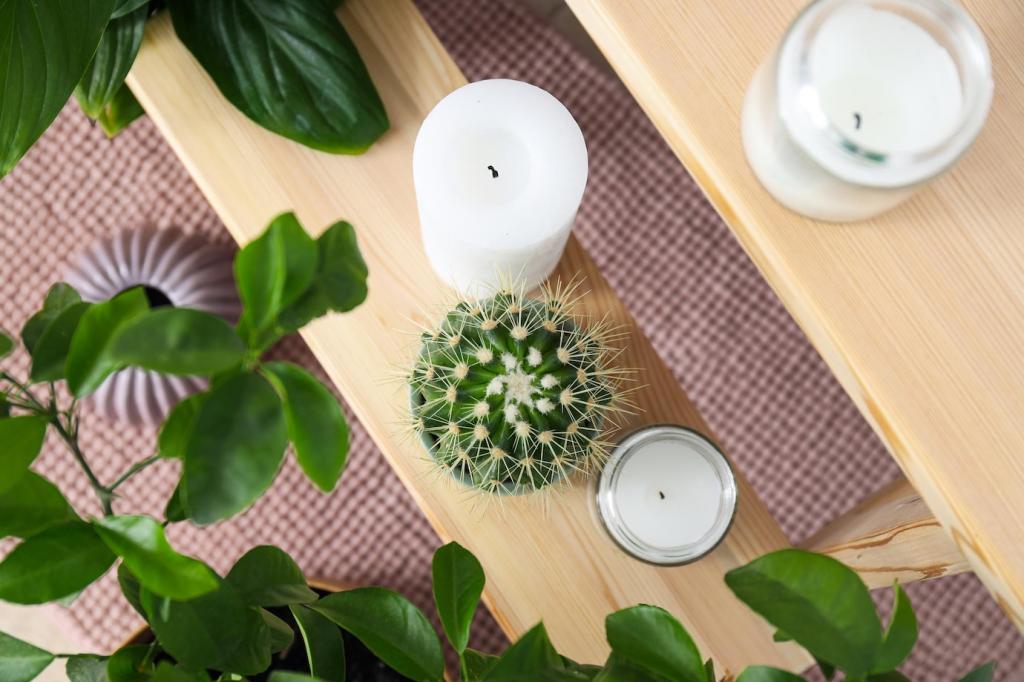
Design That Saves Every Drop
Chosen theme: Water Conservation in Home Design. Welcome to a home design journey where form, comfort, and stewardship align—transforming everyday spaces into beautiful, water-wise environments you’ll be proud to live in and share.
Efficient Fixtures, Elegant Choices
Specify Smarter Flow Rates
Choose WaterSense-certified faucets around 1.2 gpm, showers near 1.8 gpm, and toilets at 1.28 gpf dual-flush. Pressure-compensating aerators maintain comfortable spray patterns while saving thousands of gallons annually, especially in multi-bath homes.
Comfort Without Compromise
Modern low-flow showers use engineered nozzles to create fuller droplets and satisfying coverage. Pair with thermostatic valves for stable temperatures, shorter adjustments, and less wasted warm-up water. Readers consistently report happier mornings and lower utility bills.
Your Next Step
Create a room-by-room fixture checklist and compare flow rates before buying. Share your favorite water-saving brand in the comments, and subscribe to receive our curated fixture guide and printable shopping worksheet this Friday.
Plan the Plumbing Early
Route shower and laundry drains to a purple-pipe loop feeding subsurface irrigation or a filtration unit. Confirm local code, include accessible cleanouts, and design diverter valves for seasonal flexibility. Early planning avoids costly retrofits and preserves aesthetics.
A Family’s Weekend Build
One reader installed two 200-gallon rain barrels, gutter leaf screens, and a first-flush diverter in a single weekend. Their herbs thrived through summer, and municipal usage dropped by twenty-five percent without changing indoor routines at all.
Actionable Starter Kit
Begin with a small barrel, hose bib, overflow routing, and a simple pump. Track savings for one month, then scale to a cistern. Comment with your roof size, and subscribe for our capacity calculator tailored to your climate.

Landscape That Drinks Less
Right Plant, Right Place
Select native or climate-adapted species matched to sun, wind, and soil. Mulch to reduce evaporation, and group plants by water needs. This zoning approach simplifies irrigation scheduling and keeps gardens thriving through heatwaves with minimal supplemental watering.
Irrigation That Whispers
Use drip lines under mulch, smart controllers reading weather data, and rain sensors that pause watering after storms. Low, slow delivery reduces runoff and keeps roots hydrated. Many readers report deeper green with half the water and fewer weeds.
Community Curb Appeal
A homeowner replaced turf with native grasses, thyme, and permeable paths. Neighbors stopped to ask for plant lists, and the HOA praised the refreshed look. Share photos of your water-wise yard below, and subscribe for our seasonal planting guide.
Stop Leaks Before They Start
Smart Monitors and Shutoffs
Install a whole-home ultrasonic water monitor with automatic shutoff. These systems learn your patterns and alert you to anomalies, from running toilets to pinhole leaks. A single saved incident often pays for the device in repairs avoided.
The Bucket and Dye Test
Once a season, place food coloring in toilet tanks to check for silent flapper leaks. Time your faucet and shower flows with a bucket test. Track findings in a simple spreadsheet to reveal hidden trends over the year.
Maintenance Calendar
Schedule supply-line inspections, angle stop exercises, and caulk refreshes each spring and fall. Turn habits into routine, not emergencies. Comment with your favorite reminder app, and subscribe for our printable maintenance calendar and alert templates.
Hot Water Without the Wait
Continuous recirculation wastes energy; instead, use on-demand pumps activated by buttons, motion, or occupancy. Water arrives quickly, while standby losses plummet. Pair with insulated lines to keep temperatures stable between activations, reducing both water and energy waste.
Hot Water Without the Wait
Design compact wet walls and home-run PEX manifolds so fixtures receive hot water through shorter, narrower pipes. Smaller pipe volumes mean faster delivery and less cooling. Insulate all hot lines to lock in heat during brief pauses.
Hot Water Without the Wait
Time how long it takes hot water to reach each tap in the morning and evening. Note distance, pipe size, and temperature drop. Share your longest run in the comments, and subscribe for our recirculation sizing cheat sheet.



